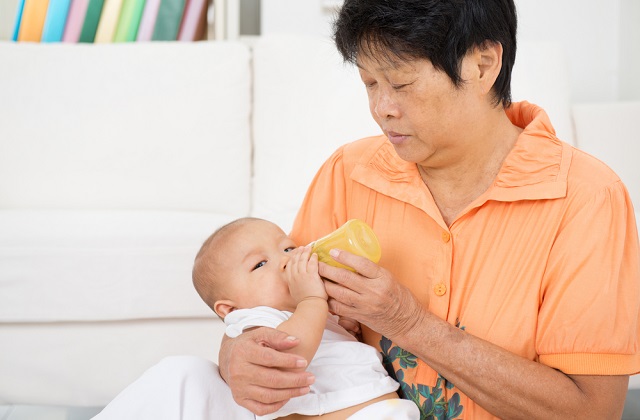Preterm Birth: WHO Recommendations On Interventions To Improve Preterm Birth Outcomes
Key facts
- Every year, an estimated 15 million babies are born preterm (before 37 completed weeks of gestation), and this number is rising.
- Preterm birth complications are the leading cause of death among children under 5 years of age, responsible for approximately 1 million deaths in 2015 (1).
- Three-quarters of these deaths could be prevented with current, cost-effective interventions.
- Across 184 countries, the rate of preterm birth ranges from 5% to 18% of babies born.
Preterm is defined as babies born alive before 37 weeks of pregnancy are completed. There are sub-categories of preterm birth, based on gestational age:
- extremely preterm (less than 28 weeks)
- very preterm (28 to 32 weeks)
- moderate to late preterm (32 to 37 weeks).
Induction or caesarean birth should not be planned before 39 completed weeks unless medically indicated.
The problem
An estimated 15 million babies are born too early every year. That is more than 1 in 10 babies. Approximately 1 million children die each year due to complications of preterm birth. Many survivors face a lifetime of disability, including learning disabilities and visual and hearing problems.
Globally, prematurity is the leading cause of death in children under the age of 5 years. And in almost all countries with reliable data, preterm birth rates are increasing.
Inequalities in survival rates around the world are stark. In low-income settings, half of the babies born at or below 32 weeks (2 months early) die due to a lack of feasible, cost-effective care, such as warmth, breastfeeding support, and basic care for infections and breathing difficulties. In high-income countries, almost all of these babies survive. Suboptimal use of technology in middle-income settings is causing an increased burden of disability among preterm babies who survive the neonatal period.
The solution
More than three quarters of premature babies can be saved with feasible, cost-effective care, such as essential care during child birth and in the postnatal period for every mother and baby, provision of antenatal steroid injections (given to pregnant women at risk of preterm labour and under set criteria to strengthen the babies’ lungs), kangaroo mother care (the baby is carried by the mother with skin-to-skin contact and frequent breastfeeding) and antibiotics to treat newborn infections. For example, continuity of midwifery-led care in settings where there are effective midwifery services has been shown to reduce the risk of prematurity by around 24%.
Preventing deaths and complications from preterm birth starts with a healthy pregnancy. Quality care before, between and during pregnancies will ensure all women have a positive pregnancy experience. WHO’s antenatal care guidelines include key interventions to help prevent preterm birth, such as counselling on healthy diet and optimal nutrition, and tobacco and substance use; fetal measurements including use of ultrasound to help determine gestational age and detect multiple pregnancies; and a minimum of 8 contacts with health professionals throughout pregnancy to identify and manage other risk factors, such as infections. Better access to contraceptives and increased empowerment could also help reduce preterm births.
Why does preterm birth happen?
Preterm birth occurs for a variety of reasons. Most preterm births happen spontaneously, but some are due to early induction of labour or caesarean birth, whether for medical or non-medical reasons.
Common causes of preterm birth include multiple pregnancies, infections and chronic conditions such as diabetes and high blood pressure; however, often no cause is identified. There could also be a genetic influence. Better understanding of the causes and mechanisms will advance the development of solutions to prevent preterm birth.
Where and when does preterm birth happen?
More than 60% of preterm births occur in Africa and South Asia, but preterm birth is truly a global problem. In the lower-income countries, on average, 12% of babies are born too early compared with 9% in higher-income countries. Within countries, poorer families are at higher risk.
Of 65 countries with reliable trend data, all but three show an increase in preterm birth rates over the past 20 years. Possible reasons for this include better measurement, increases in maternal age and underlying maternal health problems such as diabetes and high blood pressure, greater use of infertility treatments leading to increased rates of multiple pregnancies, and changes in obstetric practices such as more caesarean births before term.
There is a dramatic difference in survival of premature babies depending on where they are born. For example, more than 90% of extremely preterm babies (less than 28 weeks) born in low-income countries die within the first few days of life; yet less than 10% of extremely preterm babies die in high-income settings.
Guidelines to improve preterm birth outcomes
WHO has developed new guidelines with recommendations for improving outcomes of preterm births. This set of key interventions can improve the chances of survival and health outcomes for preterm infants. The guidelines include interventions provided to the mother – for example steroid injections before birth, antibiotics when her water breaks before the onset of labour, and magnesium sulfate to prevent future neurological impairment of the child – as well as interventions for the newborn baby – for example thermal care, feeding support, kangaroo mother care, safe oxygen use, and other treatments to help babies breathe more easily.
WHO recommendations on interventions to improve preterm birth outcomes:
|
Maternal interventions |
Recommendations |
Strength of recommendation and quality of the evidence |
|
Tocolytics for inhibiting preterm labour |
2.0. Tocolytic treatments (acute and maintenance treatments) are not recommended for women at risk of imminent preterm birth for the purpose of improving newborn outcomes. |
Conditional recommendation based on very low-quality evidence |
|
Magnesium sulfate for fetal protection against neurological complications |
3.0. The use of magnesium sulfate is recommended for women at risk of imminent preterm birth before 32 weeks of gestation for prevention of cerebral palsy in the infant and child. |
Strong recommendation based on moderate-quality evidence |
|
Antibiotics for preterm labour |
4.0. Routine antibiotic administration is not recommended for women in preterm labour with intact amniotic membranes and no clinical signs of infection. |
Strong recommendation based on moderate-quality evidence |
|
5.0. Antibiotic administration is recommended for women with preterm prelabour rupture of membranes. |
Strong recommendation based on moderate-quality evidence |
|
|
5.1. Erythromycin is recommended as the antibiotic of choice for prophylaxis in women with preterm prelabour rupture of membranes. |
Conditional recommendation based on moderate-quality evidence |
|
|
5.2. The use of a combination of amoxicillin and clavulanic acid (“co-amoxiclav”) is not recommended for women with preterm prelabour rupture of membranes. |
Strong recommendation based on moderate-quality evidence |
|
|
Optimal mode of delivery |
6.0. Routine delivery by caesarean section for the purpose of improving preterm newborn outcomes is not recommended, regardless of cephalic or breech presentation. |
Conditional recommendation based on very low-quality evidence |
|
Thermal care for preterm newborns |
7.0. Kangaroo mother care is recommended for the routine care of newborns weighing 2000 g or less at birth, and should be initiated in health-care facilities as soon as the newborns are clinically stable. |
Strong recommendation based on moderate-quality evidence |
|
7.1. Newborns weighing 2000 g or less at birth should be provided as close to continuous Kangaroo mother care as possible. |
Strong recommendation based on moderate-quality evidence |
|
|
7.2. Intermittent Kangaroo mother care, rather than conventional care, is recommended for newborns weighing 2000 g or less at birth, if continuous Kangaroo mother care is not possible. |
Strong recommendation based on moderate-quality evidence |
|
|
7.3. Unstable newborns weighing 2000 g or less at birth, or stable newborns weighing less than 2000 g who cannot be given Kangaroo mother care, should be cared for in a thermoneutral environment either under radiant warmers or in incubators. |
Strong recommendation based on very low-quality evidence |
|
|
7.4. There is insufficient evidence on the effectiveness of plastic bags/wraps in providing thermal care for preterm newborns immediately after birth. However, during stabilization and transfer of preterm newborns to specialized neonatal care wards, wrapping in plastic bags/wraps may be considered as an alternative to prevent hypothermia. |
Conditional recommendation based on low-quality evidence |
|
|
Continuous positive airway pressure for newborns with respiratory distress syndrome
|
8.0. Continuous positive airway pressure therapy is recommended for the treatment of preterm newborns with respiratory distress syndrome. |
Strong recommendation based on low-quality evidence |
|
8.1. Continuous positive airway pressure therapy for newborns with respiratory distress syndrome should be started as soon as the diagnosis is made. |
Strong recommendation based on very low-quality evidence |
|
|
Surfactant administration for newborns with respiratory distress syndrome |
9.0. Surfactant replacement therapy is recommended for intubated and ventilated newborns with respiratory distress syndrome. |
Conditional recommendation (only in health-care facilities where intubation, ventilator care, blood gas analysis, newborn nursing care and monitoring are available) based on moderatequality evidence |
|
9.1. Either animal-derived or protein-containing synthetic surfactants can be used for surfactant replacement therapy in ventilated preterm newborns with respiratory distress syndrome. |
Conditional recommendation (only in health-care facilities where intubation, ventilator care, blood gas analysis, newborn nursing care and monitoring are available) based on moderatequality evidence |
|
|
9.2. Administration of surfactant before the onset of respiratory distress syndrome (prophylactic administration) in preterm newborns is not recommended. |
Strong recommendation based on low-quality evidence |
|
|
9.3. In intubated preterm newborns with respiratory distress syndrome, surfactant should be administered early (within the first 2 hours after birth) rather than waiting for the symptoms to worsen before giving rescue therapy. |
Conditional recommendation (only in health-care facilities where intubation, ventilator care, blood gas analysis, newborn nursing care and monitoring are available) based on low-quality evidence |
|
|
Oxygen therapy and concentration for preterm |
10.0. During ventilation of preterm babies born at or before 32 weeks of gestation, it is recommended to start oxygen therapy with 30% oxygen or air (if blended oxygen is not available), rather than with 100% oxygen. |
Strong recommendation based on very low-quality evidence |
|
10.1. The use of progressively higher concentrations of oxygen should only be considered for newborns undergoing oxygen therapy if their heart rate is less than 60 beats per minute after 30 seconds of adequate ventilation with 30% oxygen or air. |
Strong recommendation based on very low-quality evidence |
(1) Liu L, Oza S, Hogan D, Chu Y, Perin J, Zhu J, et al. Global, regional, and national causes of under-5 mortality in 2000-15: an updated systematic analysis with implications for the Sustainable Development Goals. Lancet. 2016;388(10063):3027-35.
(2) Blencowe H, Cousens S, Oestergaard M, Chou D, Moller AB, Narwal R, Adler A, Garcia CV, Rohde S, Say L, Lawn JE. National, regional and worldwide estimates of preterm birth. The Lancet, June 2012. 9;379(9832):2162-72. Estimates from 2010.
It takes a village to raise a child !
Join our Facebook Group For 2023 SG Mummies or Facebook Group For 2024 SG Mummies.

.jpg)







